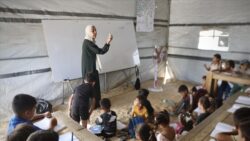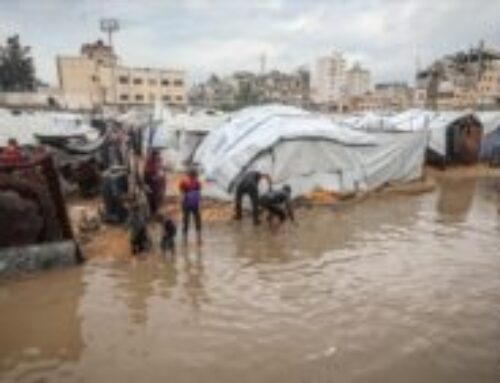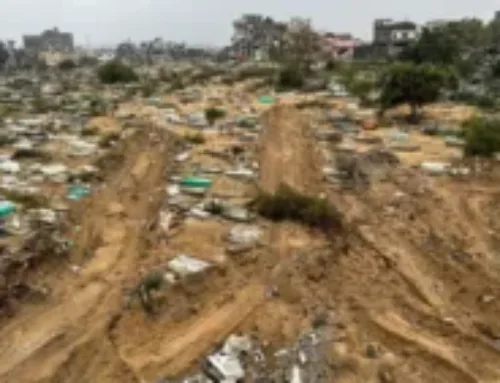In a city exhausted by war and burdened by the memory of bombings, a different scene emerges from the ashes: children returning to their classrooms after two years of genocide and siege. They come back as if carving a path toward life through the ruins of their schools, carrying torn notebooks that still hold a small space for hope.
At the Deir Al-Balah Coeducational Primary School, run by UNRWA, which only yesterday served as a shelter for the displaced, the school bell rings again. There are no new desks, no walls free of shrapnel marks — yet the small voices fill the air: hesitant laughter that insists on beginning the story anew.
“I just want to get my life back… all we need are notebooks, text books, and pens,” says Lama Abu Al-Ata, clutching her worn-out schoolbag as if it were a treasure.
Beside her, Mayar Abu Sa’da smiles softly: “We want to study like other children. We don’t want the war to be our only teacher.”
But the return is far from easy. Classrooms still stand beside tents; cooking pots line the hallways, and the ground that once carried students’ dreams now shelters the displaced. Teacher Hanin Karaz explains: “Conditions are extremely difficult — there are no desks, no stationery, no proper classrooms. But in Gaza, education isn’t a luxury; it’s a lifeline. Education is the Palestinian’s greatest asset.”
According to UNRWA spokesperson Inas Hamdan, “More than 62,000 students have benefited from temporary education programs since August 2024, in addition to around 300,000 learning remotely with the help of 8,000 teachers in Gaza.” She affirmed, “Education is a right for Gaza’s children — even amid the rubble.”
Yet the numbers tell a tragedy beyond imagination. Reports from the Ministry of Education reveal that 179 public schools have been completely destroyed, 118 partially damaged, and over 100 UNRWA schools reduced to rubble.
Universities have not been spared either, with 63 university buildings destroyed. Behind every statistic lies a name and a story: 18,069 students killed, 26,391 injured.
Despite this devastation, the school bell still rings. The Ministry continues to organize online high school exams and has launched virtual schools to keep the pulse of learning alive.
In Gaza, returning to school does not mark the end of war — it marks the beginning of life again. The children who hold their pens today are writing the continuity of existence, turning learning itself into an act of daily perseverance against extinction.
Every smile in a shattered hallway is a quiet declaration that education is stronger than destruction — and that the voice of life, however faint, will always rise above the rubble.





